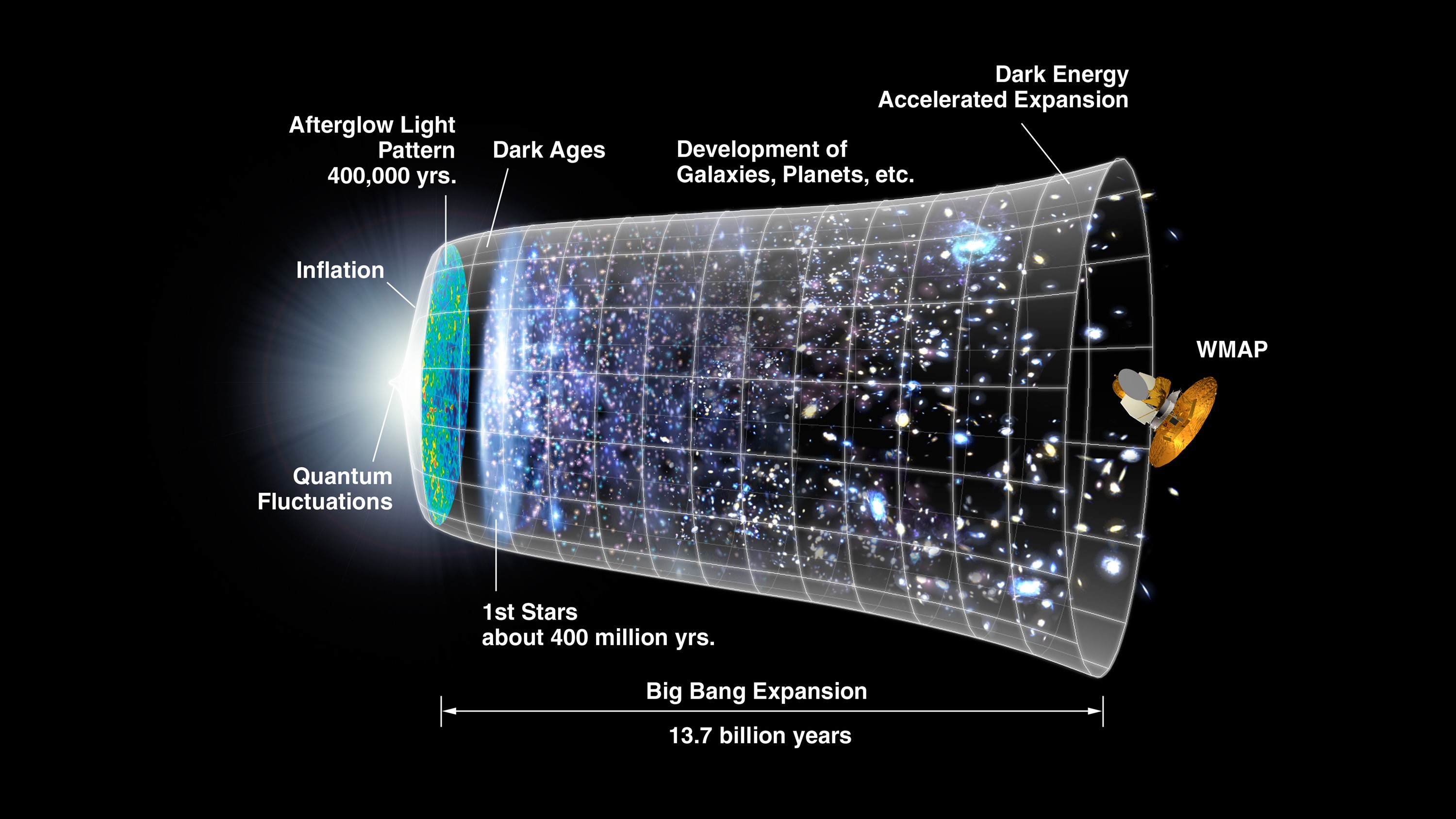How was the universe created?
Short answer: We don't really know how the universe was created, though most astrophysicists believe it started with the Big Bang.

We know that we live in an expanding universe. That means the entire universe is getting bigger with every passing day. It also means that in the past our universe was smaller than it is today.
Rewind that tape far enough, and the physics suggests our universe was once an infinitely tiny, infinitely dense point — a singularity.
Most physicists think this point expanded out in the Big Bang, but because all known physics breaks down in the extreme conditions that prevailed in our universe's infancy, it's hard to say with confidence what happened in those earliest moments of the universe.
Related: Our expanding universe: Age, history & other facts
Going back in time
For most of the history of the universe, it was dotted with similar celestial objects as are present now — they were just closer together.
For example, when our universe was less than 380,000 years old, the volume of the universe was about a million times smaller than it is today, and it had an average temperature of around 10,000 Kelvin. It was so hot and dense that it was a plasma, a state of matter where atoms are ripped apart into protons, neutrons and electrons. However, we encounter plasmas in many other situations in space and on Earth, so we have a pretty good understanding of how they work.
But the farther back we go, the more complex the physics become. When the universe was just a dozen minutes old, it was an intense soup of protons, neutrons, and electrons, still governed by the same physics that we use to understand nuclear bombs and nuclear reactors.
Breaking space news, the latest updates on rocket launches, skywatching events and more!
If we look back even earlier than that, however, things get really sketchy.
When we try to make sense of the universe when it was less than a second old, we have no theory of physics that can cope with the insanely high temperatures and pressures the universe experienced. All of our theories of physics break down, and we have no understanding of how particles, forces and fields operate in those conditions.
Birthing the singularity
Physicists can chart the growth of the cosmos using Einstein's general theory of relativity, which connects the content of the cosmos to its history of expansion.
But Einstein's theory contains a fatal flaw. If we follow general relativity to its ultimate conclusion, then at a finite time in the past our entire universe was crammed into a single, infinitely dense point. This is known as the Big Bang singularity.
The singularity is often framed as the "beginning" of the universe: But it's not a beginning at all.
Mathematically, the singularity at the Big Bang isn't telling us that the universe began there. Instead, it's telling us that general relativity itself has broken down, and has lost its predictive and explanatory power.
Physicists have long known that general relativity is incomplete. It cannot explain gravity at high strength or at small scales, known as quantum gravity. In other words, to fully understand the earliest moments of the universe, we need new physics.
A question for the ages
Sadly, we currently lack such physics. We have several candidates for quantum gravity, like string theory and loop quantum gravity, but these theories have not been fully developed, let alone tested.
But if either of those theories are correct, they can tell us interesting things about the early universe.
In the case of loop quantum gravity, the singularity is replaced with a finite-size chunk of space-time. In string theory, meanwhile, our universe originates from a "landscape" of possible universes. It's also possible that our Big Bang exists as just one of an infinite series of universes, multiplying without end in a multiverse. Only further advances in theoretical physics will help sort out the murkiness of these possible ideas.
But there's another problem: We may never know what caused the Big Bang. In its earliest moments, even our very conceptions of time and space break down. At such extreme scales, normal, everyday concepts like "beginning" and "before" may not even make sense.
Originally published on LiveScience.

Paul M. Sutter is a cosmologist at Johns Hopkins University, host of Ask a Spaceman, and author of How to Die in Space.


